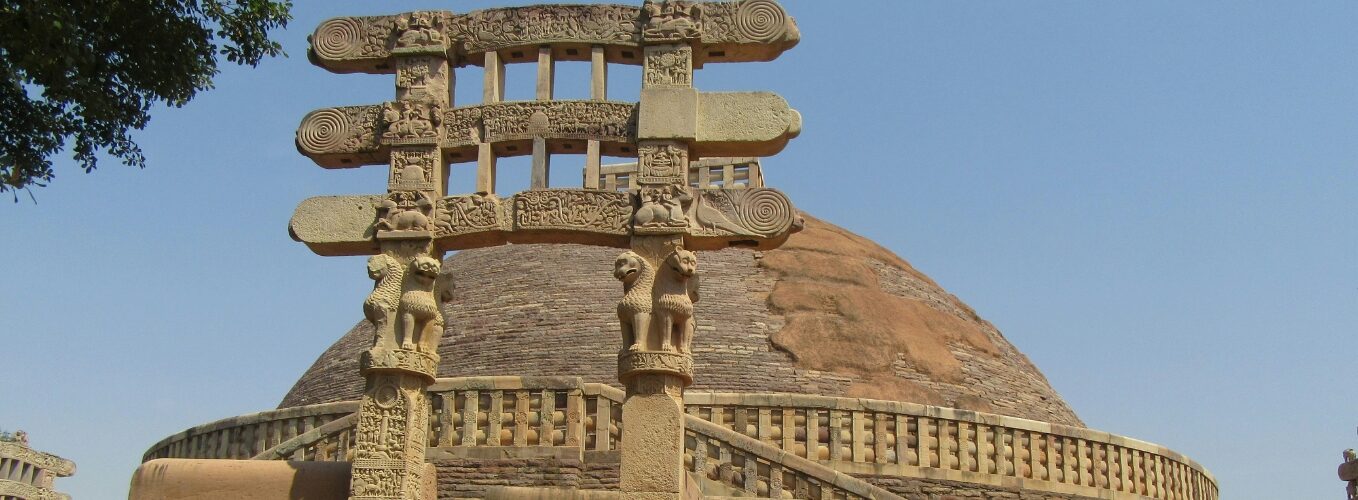

3N 4D Bhopal -Pachmarhi
Itinerary
Day 01: Arrive Bhopal - Pachmarhi (04 - 05 Hrs.)
Pickup from Bhopal Airport/Railway Station and transfer to Pachmarhi. Check in to the Pachmarhi Hotel & relax. Night stay at Pachmarhi.
Tip:If Time Permits En-route Guests can visit Bhojpur Temple and Bhimbetka (UNESCO World Heritage Site).
Bhojpur Temple’s construction is believed to have started in the 11th century, during the reign of the Paramara king Bhoja. The construction was abandoned for unknown reasons, with the architectural plans engraved on the surrounding rocks. The unfinished materials abandoned at the site, the architectural drawings carved on the rocks, and the mason’s marks have helped scholars understand the temple construction techniques of 11th-century India.
Bhimbetka is a UNESCO World Heritage Site that consists of seven hills and over 750 rock shelters which were inhabited more than 100,000 years ago. The rock shelters and caves provide evidence of human settlement and the cultural evolution from hunter-gatherers to agriculture, and expressions of prehistoric spirituality. Some of the Bhimbetka rock shelters feature prehistoric cave paintings and the earliest are about 10,000 years old corresponding to the Indian Mesolithic. These cave paintings show themes such as animals, early evidence of dance and hunting from the Stone Age as well as of warriors on horseback from a later time. The Bhimbetka site has the oldest-known rock art in India, as well as is one of the largest prehistoric complexes.
Day 02 – Pachmarhi Sightseeing by Gypsy
After breakfast, proceed for sightseeing by Gypsy, Visit Bison Museum, Pandav Caves, Bee Fall, ReechGarh and Dhoopgarh. Night stay in Pachmarhi.
Tip:Local Gypsy need to book in advance for sightseeing to avoid walk. Wednesday -second half sightseeing is closed for maintenance.
Pachmarhi: The name Pachmarhi is believed to be derived from the Hindi words Panch (“five”) and Marhi (“caves”). According to a legend, these caves were built by five Pandava brothers of Mahabharatha era during their thirteen years of exile. The caves are situated on a hilltop and provide an excellent vantage point. Pachmarhi, also known as Satpura ki Rani, is a hill station in the central Indian state of Madhya Pradesh.
Bison Museum : Small museum dedicated to animals & plants featuring life-sized sculptures depicting local wildlife. It is a lovely museum exhibiting paintings / photos of the bio-diversity of Pachmarhi . The exhibits are housed in two bungalows . It depicts the history of Pachmarhi . It is quite informative.
Pandav Caves: 5 hilltop caves believed to have been carved more than 1,000 years ago, with a formal garden below. The Pandav Caves were cut into a low hill. Buddhist monks created the caves anytime from the first century AD to the 10th century AD.
Bee Fall: This is a waterfall in Pachmarhi. It is so named because from a distance the waterfall sounds like a bee. Bee Falls takes its name from bees since this place is famous for honey bees.
Reechgarh – one of the biggest natural cave in Pachmarhi. Reech stands for Bear and the cave is said be the place for bears. Quite a massive cave and very interesting inside. The place is very picturesque and a rough terrain.
Dhoopgarh is the highest point in the Mahadeo Hills (Satpura Range). it has an elevation of 1,352 metres (4,429 ft). The top of the hill is a popular area to watch sunsets.
Day 03 – Pachmarhi Sightseeing
After breakfast, proceed for sightseeing Handi khoh, Priyadarshini, Gupt Mahadev, Lake and Rajendragiri. Night stay in Pachmarhi.
Tip:Wednesday -second half sightseeing is closed for maintenance.
Handi Khoh is Pachmarhi’s most impressive ravine. It has a 300 ft high precipice, which dramatically cuts down deep into the bowels of the earth. This is a lonely place where water flows far below with an incessant mumuring sound. Overhanging crags shelter huge, undisturbed beehives to the sheer rock face. The ravine is said to be named after an eccentric Englishman who set out to explore the ravines in a state of drunkenness lost balance and fell to his death.
Priyadarshini Point is the hilltop from where you get an eagle’s eye view of the entire town. This is the place from where Captain James Forsyth discovered Pachmarhi in the year 1857. One can get a beautiful view of the entire Pachmarhi valley and especially Handi Khoh from here. The entire place has hills rolling on each other and surrounded by clouds and mist, the entire scenery is worth enjoying. Also, it is an ideal place to see the sunset in the majestic Satpura Range.
Gupt Mahadev is a 40 feet long cave dedicated to Lord Shiva. Snuggled cozily amidst the Mahadeo Hills, this temple houses a Shivalinga, and Lord Ganesha. With a Lord Hanuman Statue at the entrance, the path is narrow and meandering where only 7 to 8 people can get inside at a time. One has to literally squeeze or move sideways to go inside. The place is quite an interesting and mysterious spot near Pachmarhi where spirituality meets adventure.
Pachmarhi Lake is a man made water-body, but its serene and scenic surroundings along a vast expanse makes you feel like you are floating in a natural paradise. Pachmarhi lake is an ideal venue for boating as well as food stalls are also available for visitors.
Rajendragiri park – this gives another view of the Satpura range of hills. This is a sunset point. Importantly, one gets to see the highest point – Chauragarh from there.This is named after Dr. Rajendra Prasad, the first President of India.
Day 04 – Pachmarhi – Bhopal Departure (04 – 05 Hrs.)
After Breakfast, Checkout and Proceed to Bhopal Airport/Railways Station for your onward Journey.
The above tour description, inclusions, exclusions are daywise itinerary are indicative and may change at the time of quoting and booking

